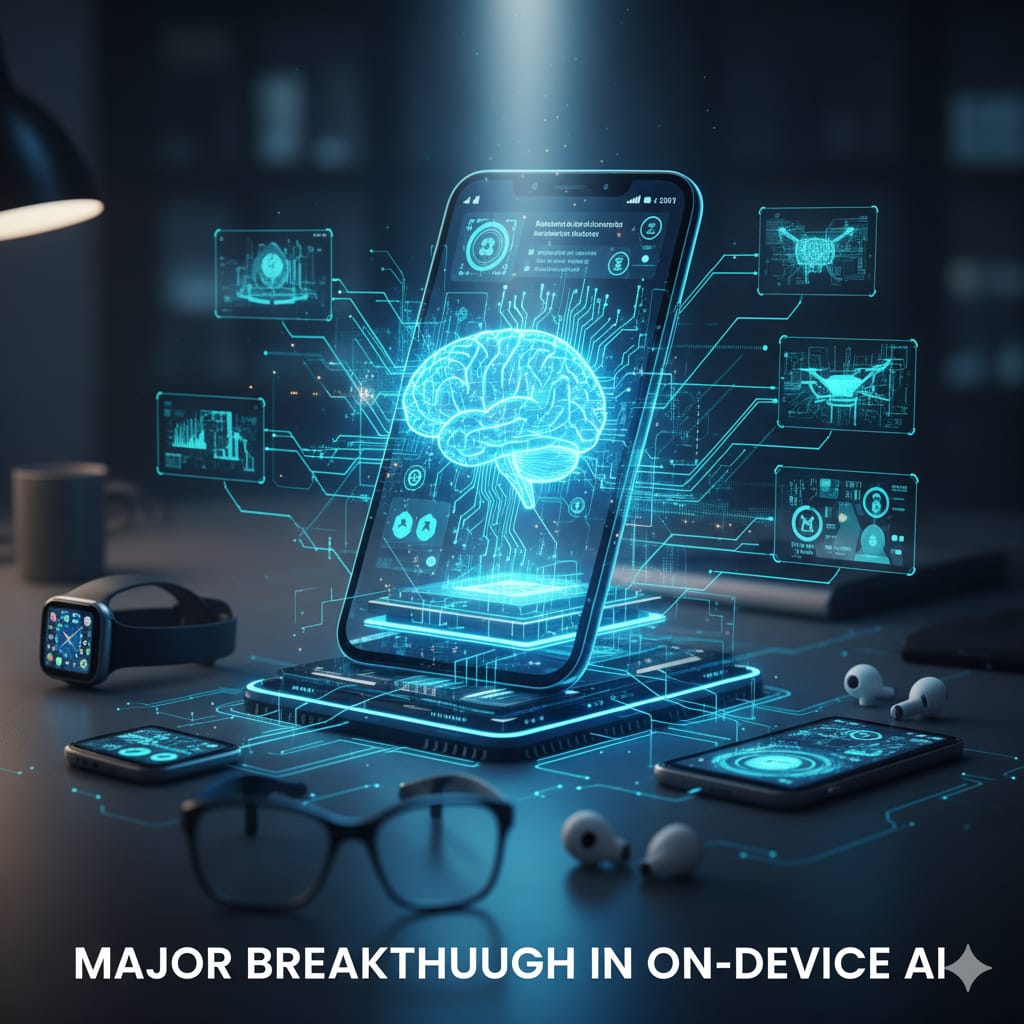Introduction: The Shift from Cloud to Edge
The artificial intelligence landscape has been predominantly cloud-based, relying on massive data centers to process user queries and generate responses. This model, while powerful, comes with inherent limitations: latency, dependency on internet connectivity, and significant privacy concerns as data is transmitted to remote servers. Today, September 6th, 2025, Google DeepMind announced a breakthrough that threatens to disrupt this entire paradigm. The launch of Gemini Nano 2, their most capable small language model (SLM) yet, marks a decisive pivot towards powerful, efficient, and private on-device AI processing.
Gemini Nano 2: Technical Specifications and Capabilities
Gemini Nano 2 is engineered to deliver a performance previously thought impossible for a model of its size. It is a multi-modal model, meaning it can understand and process not just text, but also images, audio, and code directly on a user's device. This eliminates the need to send sensitive data to the cloud for analysis, a major step forward for user privacy.
The model's architecture represents a significant leap in efficiency. While larger than its predecessor, it operates within the strict thermal and power constraints of mobile devices. Early benchmarks indicate it outperforms many cloud-based models from just two years ago on specific tasks like text summarization, smart reply, and real-time translation.
| Feature | Gemini Nano 2 (On-Device) | Standard Cloud AI |
|---|---|---|
| Latency | Near-instant (no network delay) | Variable (dependent on connection) |
| Internet Requirement | Not required | Essential |
| Data Privacy | High (data never leaves device) | Lower (data processed on servers) |
| Operational Cost | One-time device cost | Recurring API/cloud fees |
| Use Cases | Real-time transcription, offline translation, private photo analysis | Complex research, large-scale content generation |
The Business and Consumer Impact of On-Device AI
The implications of this technological leap are profound for both businesses and everyday consumers. This shift to the edge represents a new chapter in how we interact with intelligent systems.
Enhanced Privacy and Security
For consumers, the most immediate benefit is a dramatic enhancement of privacy. Sensitive activities—such as dictating a private message, analyzing personal health data from a wearable, or scanning personal photos for specific content—can now be handled entirely locally. This negates the risk of data breaches at the server level and prevents the service provider from ever having access to the raw data.
New Possibilities for Real-Time Applications
Without network latency, AI features can become truly instantaneous. This enables a new class of applications:
- Real-time video transcription and translation: Video calls can be translated and subtitled live without any lag.
- Advanced photo and video editing: AI-powered tools like object removal, style transfer, and enhancement can be applied in real-time within the camera app.
- Always-available assistants: AI assistants can function seamlessly in areas with poor connectivity, like airplanes or remote locations.
Challenges and Considerations
Despite the excitement, this transition presents challenges that the industry must address:
- Hardware Requirements: Widespread adoption requires a new generation of devices with more powerful, AI-optimized chips (NPUs).
- Fragmentation: A disparity in AI capabilities between new and old devices could create a fragmented user experience.
- Model Limitations: On-device models, while powerful, will not match the sheer scale and knowledge of the largest cloud-based models for highly complex tasks.
The Strategic Move for Google and the Industry
Google's investment in Gemini Nano 2 is a strategic masterstroke. By moving AI to the device, they:
- Reduce Computational Costs: They offload billions of daily queries from their expensive cloud servers onto user devices, saving immense computational resources.
- Differentiate Android: They create a powerful, unique selling point for the Android ecosystem, competing directly with Apple's longstanding focus on on-device processing and privacy.
- Future-Proof Their Services: They prepare for a future with increasing data privacy regulations by designing services that are private by default.
This move forces the hand of competitors like OpenAI, Meta, and Apple to accelerate their own on-device AI strategies, setting the stage for an intense new battleground in the tech war.
Conclusion: A Decentralized AI Future
Google DeepMind's launch of Gemini Nano 2 is more than just a product update; it is a signal that the future of AI is distributed. The era of every query traveling to a centralized cloud is beginning to wane. We are entering a new phase where intelligence is embedded directly into the devices we use every day, offering unprecedented speed, privacy, and reliability. This breakthrough democratizes access to powerful AI, ensuring its benefits can be experienced anywhere, anytime, by anyone—with or without an internet connection. The race to the edge has officially begun, and it will define the next decade of computing.
[1][2]

